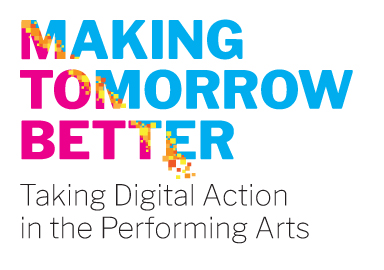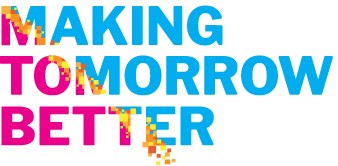Stage Four: Deliver & Event Scenarios
By Jason Guille (Stream of Consciousness), Lynn Feasey (Points North Creative) and Inga Petri (Strategic Moves/ ipetri@strategicmoves.ca), February 2021
Technical Delivery
When it comes to producing a blended or hybrid in person and online event, the gradient of technical sophistication is significant. On the simplest end of the spectrum, it’s possible to take a short live event online with a smart phone and good cell reception – though this would typically be insufficient for a professional event.
On the other end of complexity is a full technical team delivering a professional grade 4K multi-camera multi-language broadcast, complete with production elements like animations, live music, graphic overlays, calls-to-action, green screen integration, remote guests, picture-in-picture American Sign Language interpretation, managed and moderated breakout rooms, audience engagement mechanisms and more.
There’s no natural top end to how technically complex a digital event can be to deliver a truly superior and stand-out experience. By way of example, the Stream of Consciousness team has delivered a virtual event where we had a set on the ocean seabed shot with underwater divers and cameras, mixed on a ship and distributed via satellite to IMAX theatres across Canada.
Most blended conferences or events require intermediate solutions: professional, with solid technical set ups to deliver sound experiences to in person and online audiences. In the following scenarios, we lay out some equipment guidelines for common workflows.
How to deliver a great professional calibre experience
Scenario 1: Short Event / Small Blended Audiences
Scenario 2: Large digital audience and mix of in person and digital speakers
Scenario 3: Large multi-day, multi-lingual conference
Scenario 1: Short Event / Small Blended Audiences
A 2 hour in-person workshop (50 people) with a few speakers on a stage, which is being shared out via Zoom to a small online audience (50 people) who are participating from within BC (therefore, one language and time zone).
CAMERAS & VIDEO
This event likely has one camera pointed at the speakers on stage, which could EITHER be a good external webcam (ie Logitech C920, $130) or a decent mid-range HD video camera (ie Canon HF W10, $400) connected to your computer & Zoom via an HDMI capture card (ie the elgato camlink 4k, $180).
AUDIO MANAGEMENT
The microphones on stage need to be brought into an audio mixer or audio interface (ie Behringer UMC404HD, $250), and then that audio source would be selected in Zoom as the outgoing audio source. If amplifying the presenters in venue via a sound system, your technical director / sound tech will need to take great care to ensure there isn’t an audio feedback loop in the room, or into the livestream.
INTERNET MANAGEMENT
At this level of event, all your core content is coming from the stage, and the demand on your internet signal here is primarily outbound (“upload”). An unshared/dedicated, hardline internet connection (not wifi, if possible) with a minimum speed of 100MBPS download speed, 10MBPS upload speed.
COMPUTERS & EQUIPMENT
Any mid-level Apple or PC computer built in recent years can run an effective Zoom meeting and handle 1 HD video camera feed from your stage. Best practices include ensuring that you have as much computer memory (RAM) and internet speed (bandwidth) available as possible. To accomplish this, close anything you can that might be using up your computer’s memory & bandwidth (common bandwidth hogs include email, Dropbox, Chrome, Google sync, Time Machine and streaming services like Netflix & Youtube)
TEAM
An event team is needed for the in-person event, the digital and technical elements likely require:
- 1 technical director (to oversee audio, video, projection, etc)
- 1 Zoom manager (to run Zoom, manage pinning/spotlighting, etc)
- 1 audience engagement person (to answer questions, be active in chat, provide tech support)
BUDGET
This is a fairly inexpensive event, with baseline audio/infrastructure in the physical venue, 1 midrange computer to run the Zoom call, a typical “high speed” internet account, a basic Zoom meeting account and a small event production & technical team.
ADDITIONAL CONSIDERATIONS
In this scenario, half your audience is online and half is in the room.
- Engage and acknowledge your audiences equally.
- Always record your event on camera as well as in Zoom. It’s important to have a redundant recording in case there’s a breakdown with the Zoom event or recording.
Scenario 2: Large digital audience and mix of in person and digital speakers
A small physical event (audience of 50 people) with a few speakers on stage and a few speakers participating remotely from their homes. Some speakers have PowerPoint presentations. The event is shared via Zoom to a large online audience of 1,000, and breakout groups are intended. Online attendees will be invited to ask questions of on-stage speakers.
CAMERAS & VIDEO
The camera scenario here would be the same as Scenario 1. The big change at this level is that we are no longer simply sending out the event content, but we are also now introducing inbound content (in the form of the speakers online, and live questions from the online audience). The incremental technical footprint for this event requires a “comfort monitor” (television, large computer monitor or video projection) so that the onstage speakers and guests in the room can see and hear the remote speakers and the questions from the digital audience. This comfort monitor is most easily set up as a “2nd Monitor” from Zoom, and positioned in such a way that the stage speakers and the live audience can watch it. With just 50 people attending in person, a large television may be adequate.
AUDIO MANAGEMENT
While the Zoom/digital audio setup for this event is the same as Scenario 1, your in-venue audio just became more complex – as you now need to be able to feed the inbound content (remote speakers) into the physical room for the in-person audience. Additionally, there may be embedded videos (with audio) amongst the PowerPoint presentations we’ve introduced in this scenario. Overall, this can be a fairly complicated in-venue audio scenario that surpasses what we will cover here. In a scenario such as this, most event producers will engage an in-house audio tech to ensure the in-venue audio is routed and managed properly.
INTERNET MANAGEMENT
While most of your core content is still coming from the venue, you have now introduced inbound content (remote speakers) and the internet speed and stability on THEIR end has now become a variable. The goal now is to have BOTH/ALL parties maintaining unshared, hardline internet connections (not wifi, if possible) with a minimum speed of 100MBPS download speed, 10MBPS upload speed (you can use www.fast.com to test the speed of your existing connection). Be sure to schedule time in advance of the event to test your remote speaker’s connections and ensure that the speeds above are available, and consistent, over time.
COMPUTERS & EQUIPMENT
We haven’t introduced anything new in terms of what’s required from your host / production computer, and any modern PC or MAC (following the guidelines in Scenario 1) will be able to host this Zoom event. Watch for huge file sizes in PowerPoint presentations, which often points to an embedded and unprocessed video file (videos are best played from outside PowerPoint, not from within).
TEAM
- Add an Audio Technician: By introducing remote guests, you will likely need to introduce an audio technician in the venue (per above).
- Add Breakout Moderators: By introducing breakout rooms for 1,000 people, multiple breakout room hosts will be needed (depending how many people you put in each breakout). Breakout rooms often introduce breakdowns, so take the time to design this workflow carefully. Who is in which room? How much time do they have? Who are the moderators? Do they need to be co-hosts?
- Add a Zoom Breakout Room Host: With 1,000 people in breakout rooms, you will also want a host available back in the main Zoom room, as many guests will exit their assigned breakout room and re-populate to the main room – often seeking to move to another room or ask a question of the host.
BUDGET
Incremental added costs include
- Sound Technician: Sound technician for a venue are paid $30-$70/hr for their expertise
- Video Conferencing License: At 1,000 online attendees, the Zoom and other platforms increase costs significantly.
- Speaker Support: There may be incremental HR/staff costs given the additional time spent preparing remote speakers, reviewing their technical setup, testing their internet, and ensuring they are set up for success for the day of your event.
ADDITIONAL CONSIDERATIONS
Organizers often underestimate the need for audio management on the side of the remote speakers. Be sure to support your remote speakers to try to anticipate and prevent interruptions, phone notifications, a dog that needs to be walked… some preventative work can go a long way to protect the quality of audio coming from your remote guests.
If you want to introduce two-way dialogue (ie in-venue guests asking questions of remote speakers, or remote speakers being interviewed by the MC) it’s important to note that there may be some signal latency which can impact the fluidity of conversations. It’s generally best to avoid “conversational” style dialogue between local & away speakers, unless you know both parties have fast internet speeds which can reduce lag time.
The easiest way to facilitate online attendees asking questions of onstage speakers is to take questions via the Q&A or Chat systems (Zoom or equivalent), and to have a team member collect and read those aloud to the stage speakers. This dynamic has the additional benefit of having room participants and speakers be reminded of the digital audience, and ‘brings them into the room.’
Scenario Three: Large multi-day, multi-lingual conference
A multi-day conference (audience of 500 people) with programming in 3 different rooms over 3 full days. There are speakers on stage and remote speakers including the main keynote presenter joining remotely each day. Some speakers have PowerPoint presentations, some have videos to show. The event is being professionally broadcast and requires pro audio & lighting, cameras and operators, hardware mixers and the team to manage all that. Online guests are participating in an online event platform (like Hey Summit or Socio), within which the sessions themselves are viewed in Zoom. There are 10,000 online viewers and online guests will be invited ‘onstage’ (on camera in Zoom) to ask questions live of the event presenters. ASL, French & Spanish are required.
TECHNICAL
At this scale of production, a significant technical infrastructure is required. All of the previously mentioned technical elements are required, along with an array of new and expanded technical systems. IE) Showing videos in the room requires in-venue projection (imagine magnification or “IMAG”), and that same feed needs to be broadcast to the livestream audience via a dedicated computer or video mixer.
To deliver a professional livestream via a stage-based event, an array of stage lighting must now be introduced so that the online audience can easily see the onstage speakers and guests. Note: we typically need to light the stage brighter for the purpose of broadcast, than we normally would for just the in-room audience.
The livestream production will typically be a distinct team and set of equipment, composed of top-end computers, video mixers, professional cameras, encoders and peripherals. At this level of online viewership, you must use Zoom Webinar (and not Zoom Meeting).
For any professionally broadcast event, there are ideally two dedicated internet connections in place just for the broadcast (one primary, one backup) and both of these connections would be fixed, hardlined, unshared with minimum speeds of 100MBPS download and upload. In a scenario such as this, if all three stages are being broadcast, you would typically be seeking to have 6 internet lines (or distinct connections) in place for this intention (save for those rare experiences where you have an ultrafast fibre connection or equivalent).
Exceeding 10,000 viewers (online and in person) certainly warrants the time investment being put in to the remote speakers and their technical setup. Working with them to ensure good lighting, audio, video and internet speeds will have a huge impact on the overall production quality of the event and on the enjoyment of your many viewers.
HUMAN RESOURCES /TEAM
At this scale of event your technical team is considerable. The broadcast team alone here is at least 3 people plus camera operators, then you have your in-house A/V team handling in-venue audio and video projection, and this may be the case for each of the three rooms we’ve imagined in this larger scenario.
Within online guests being able to ask questions of your stage presenters, you definitely here have at least 1 audience engagement person who is monitoring the Q&A or Chat and seeking audience members to bring “onstage” (Zoom). In order to bring the guest onto the Zoom “stage”, this team member will also need to be a Zoom co-host.
Accessibility: with multiple languages plus ASL required, there will need to be a strong focus on accessibility systems here. While in some instances onsite ASL/interpretation will be possible, often these services are introduced remotely. These days there are many such available options for language captions, simultaneous interpretation and ASL with a huge gradient in pricing and sophistication – from AI-based captions (like from REV.com) to enterprise-level services (like transistent.com).
At this scale of event, with thousands of online viewers, we can expect considerable customer service and technical support requests via our email, website and social media channels. It’s important that we anticipate these requests and have a team in place to respond. Pro tip: templating many of the most common responses can go a long way when providing remote customer service to so many people.
BUDGET
The introduction of multi-room and multi-language translation will have a considerable impact on budget, and once the overall event parameters are determined, these accessibility features will warrant some time and research to determine pricing options.
The price range for a professionally delivered livestream broadcast is considerable, but for an event as describe in this scenario you can expect prices to start around $20,000. When seeking quotes on this work, try to be clear about the exact parameters of the broadcast – how long, how many rooms, via what platform, how many cameras, are the cameras staffed or static, and so on. These details will help a livestream team give you an accurate quote.
ADDITIONAL CONSIDERATIONS
With 500 people in-venue, it will feel like a sizable event, but it’s important to remember that this represents only 5% of your total audience. Much energy will need to be put in to have the 10,000 online attendees feel engaged, acknowledged and present. In particular, speakers and MC will need to be mindful that the vast majority of attendees are ‘just on the other side of that camera lens and to speak directly to them’. To summarize – find ways to keep your speakers and event producers deeply connected to the online community and investment they’ve made to attend your event.





